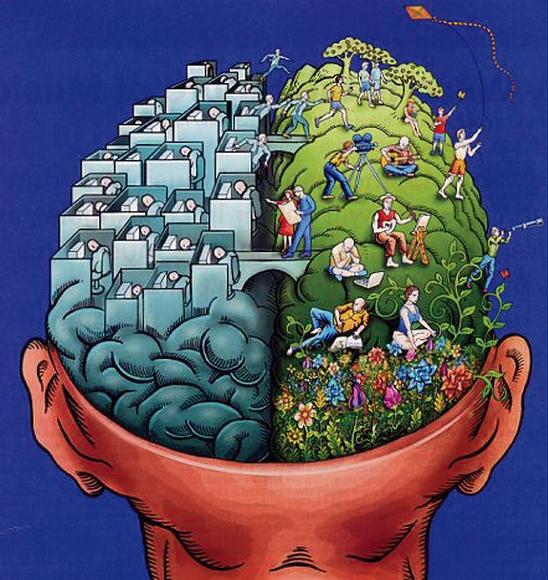Watson: Know your learning style

Opinion: Left Right Brain
August 24, 2012
Imagine you’re in your car driving to work. The process is mindless, street names irrelevant, actions thoughtless and components nameless, yet you know exactly what you’re doing and where you’re headed. This is thinking with the right side of your brain. “Take a right on Hyland, go through the stop sign and down the hill then take a left on Campus Ave.” This is thinking with the left side of your brain.
Both processes come from one whole brain, with the second example coming from the left, analytical and sequential side, contrasting the automatic, thoughtless right. Depending on the task, the know-how comes from one hemisphere or the other, yet teaching is almost exclusively geared towards the left hemisphere of the brain.
The lateralization theory, developed by Noble Prize winners Roger Sperry and Robert Ornstein, explains and evaluates the workings of the brain and what specific functions each side (or hemisphere) are responsible for. It’s been found the left side of the brain controls math skills, analytical thinking, sequential tasks and instruction following. Whereas the right side is responsible for generating an understanding of geometric principles, color scheming, feeling rhythm and flow of music; interpreting and expressing verbal and nonverbal emotions; and providing a grasp of metaphors. Some doctors and scientists have gone so far as to label them the “auditory left” and “visual right.”
If you have to analyze or consider how to do something, it’s left brain thinking. If it comes naturally or intuitively, it’s right brain thinking.
Left brain dominant people tend to be better organizers, following the appropriate steps to see something finished, and tend to be more thorough, and logical in their thinking. It’s difficult to put to terms the functions of the right hemisphere because the words and descriptors used to explain it are tools of the left hemisphere. It’s like trying to describe a smell — words and comparisons are useful but ultimately fall short of their descriptive intent.
Clearly the two hemispheres operate with two very different methods of processing data. Everyone learns differently, but in general, most people can learn through various teaching methods. However, everybody has one hemisphere more dominant than the other and are better able to learn when teaching is directed to their dominant hemisphere.
Remember when you learned to do math? “If you have five apples and take away three, you have two left.” Math was easy because you literally had five objects to manipulate in front of you to better grasp the lesson. Later, fingers replaced apples, followed by memorization. This is where the learning process slows significantly, with disinterest followed by frustration. High effectiveness of this teaching has been realized, and coupled with increased attention directed to the possibilities of right hemisphere education, has led to new teaching methods endorsing those findings.
Most of the new teaching methods are being developed for elementary students, as these are fairly new methods. One of such teaching methods being implemented to speed up the memorization curve is called “touch math.”
Students are shown equations with numbers containing dots correlated to that number. The students then simply touch the tip of their pencil to the dots on the numbers, making memorization an ever easier bridge to cross.
Our world is dominated by the left brain. Our schools teach the left brain because learning is most easily accomplished through verbal instruction and reading. However, this style of teaching leaves the right half of our brain, and the students with dominant right hemispheres, greatly neglected. Cultivating the right hemisphere would result in increased creativity, as well as a greater capacity for problem solving within all students.
How do you learn best? Whether you learn by sight memorization, verbally repeating facts or rewriting notes, understanding your brain’s preferred learning methods is the key to efficient learning.
Students use flashcards for memorization at any level of schooling. Left brain dominant learners use flashcards with the answer on the back. Right brain learners associate a specific question with a visible answer in a photographic memory kind of way. Color recognition is another tool to enhance right brain learning. Work on implementing various studying methods most in line with your learning style, and you will surely see a rise in test scores and intelligence alike.
The two hemispheres of the brain operate independently and with different functions from the other. This is no coincidence. By cultivating education directed towards the creative right hemisphere, intelligence will be greatly increased in all levels of schooling. The sooner our education systems begin to teach by utilizing the nearly neglected half of our brain, the sooner we can realize just what our brains are capable of when properly taught.
















